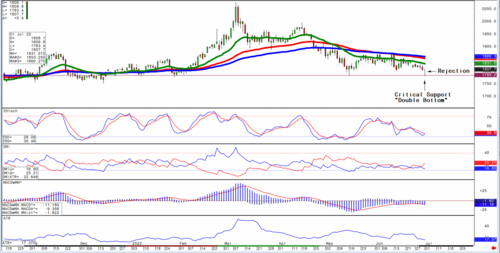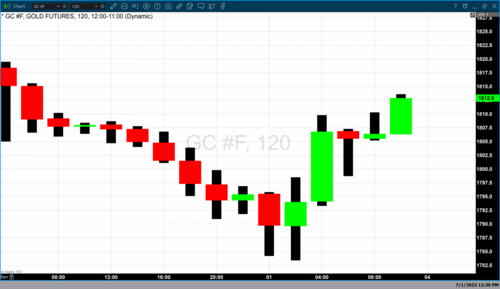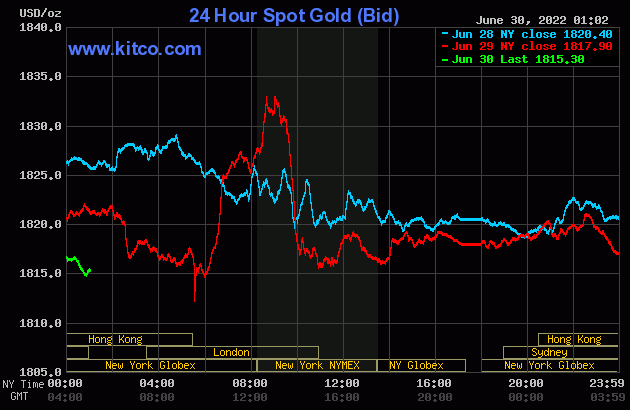How the Militant Left Uses Fear
Christopher J. Farrell is the Director of Investigations and Research at Judicial Watch and a former U.S. Army Counterintelligence Officer.

A technique the Left uses to increase control through public anxiety is to “set multiple fires along the ridgeline.” The public notices that the flames are spreading. Which fire does one run to first? What must be sacrificed and allowed to burn?
Christopher J. Farrell — 30.06.22
“Paranoia strikes deep. Into your life it will creep. It starts when you’re always afraid.
Step out of line, the men come and take you away.”
—“For What It’s Worth,” Steven Stills, Buffalo Springfield, 1966
The objective of the militant political Left
Whether in Hungary, at the European Union (EU), or in the United States—is to keep the public in a state of perpetual, acute, neurotic anxiety. They employ this form of psychological conditioning as a means of control. In the last century, socialists—National Socialists but particularly Communists—specialized in the technique to impose totalitarian control over whole societies.
Their goal is to manipulate the population into a series of fear-based decisions that disconnect people from their traditions, history, and values—and from each other. Separation from reality, inducing neurotic behavior, and developing disordered environments—while simultaneously extinguishing individual independent thought and behavior—work together to create ‘learned helplessness,’ leaving a vacuum for government to step in and ‘save the day.’
This type of strategic psychological combat, aimed at directing and swaying public attitudes, is not new, nor is it merely the product of the last 100 years. Sun Tzu also stressed the importance of destroying the enemy’s will to fight in his 5th-century BC writings on military affairs. Lenin’s 1920 “Conditions for Admission to the Communist International” discusses this technique as “demoralization”—the far-stronger German term is Zersetzung—meaning break-up, decomposition, and disintegration. In the late 1920s, the German communist party had specific operational detachments, referred to as Apparat, specifically for Zersetzung and Terror, working together in a powerful combination. The German communist cells took orders from Moscow, agitated for class warfare, deconstructed society for political advantage, and subverted the authority of the Weimar constitution. You are the modern-day target for this exact same treatment.
The mind has always been one of the most important battlegrounds—this is especially seen in Lenin’s dogmatic interpretation of Marxism. Lenin stresses throughout his writing that there can only be one right belief and that any dissent is a threat meriting terrorism at home and aggression abroad. This ideology has given and continues to give, the militant Left license to deploy its full arsenal of techniques to destroy its opposition. The Left wants you to give up and comply.
As disconnection and dependence contribute to the breakdown of family, community, and national identity, the general population is to be driven into the arms of an all-knowing, all-providing, homogenizing global society. Global citizens will find rest, comfort, and direction through compliance and in their ruling parties.
Balázs Orbán, political director to Hungarian Prime Minister Viktor Orbán, details a compelling case for how the EU seeks to impose and enforce cultural structures, as well as moral and legal norms, across all of Europe without dialogue or debate. He discusses the phenomenon of “universalist thinking” demanding fetish compliance, in the context of the EU operating as a 21st-century empire, in the Winter 2021 edition of The European Conservative. The elite rule and all subjects must comply. Dissent is often punished. Disagreement is barely tolerated and frequently sanctioned economically. The essence of sovereignty—representative government—is dismissed as a quaint relic inconsistent with the rigid orthodoxies of Leftist ideology.
As Balázs Orbán points out, “only 8% of the EU’s senior officials come from Central and Eastern European states, though those states make up 40% and 20% of the EU’s population, respectively.” When the EU leadership criticizes and sanctions Hungary for wanting to enforce (Schengen) border security or for affirming the God-given right of Hungarian parents to decide what their children are taught in school, then something is very wrong. Political intimidation and economic coercion are the tools of fear leveraged against a nation in an international campaign to compel universal compliance.
The Left seeks to destroy and reshape national consciousness so that life is reduced to an obsessive list of things that are either ‘forbidden’ or ‘mandatory’—and are enforced by either subsidized or punitive state control.
Furthermore, eager compliance with state diktats is encouraged and rewarded with privilege and status. Virtue posturing and social demonstrations promoting state-sponsored group-think are ironically promoted as being bestowed with a keen awareness meriting the now-tired trope ‘Woke.’ In the United States, Hollywood stars posture while American cities burn and 2 million illegal aliens cross the southern border. Citizens are reduced from being the sovereign authority to a state resource that funds their own destruction.
Militant Leftist attacks—both ideological and physical—are launched against history and facts. Traditions and foundations are besieged and undermined. Most recently in the United States, that effort has manifested in the so-called ‘1619 Project,’ which seeks to rewrite America’s founding and everything that comes from it, as based on slavery and racism. It is not merely a social commentary—it is an attempt to destroy our Constitution.
Beyond the ideological and physical attacks, society is also subjected to political and social group psychoanalysis that, in a perverted way, allows for the mass production of complexes and traumas. The counterfactual and increasingly hysterical claims of America’s ‘systemic racism’ is an example of the tactic. Again, the American public is attacked with the goal of inculcating feelings of error, guilt, shame, and fear, as well as desires (by some) for repentance and revenge.
Another technique the Left uses to increase control through public anxiety is to manufacture crises or “set multiple fires along the ridgeline.” The fires represent crises and controversies that are presented to the public via compliant media as urgent and threatening. The public (down in the ‘valley’) notices that up above them, on the hillside and ridgeline, there are multiple ‘fires’ burning at different spots, and the flames are spreading—sweeping across the terrain. Which fire does one run to first? How many can be put out? What must be sacrificed and allowed to burn? How can the public sustain these challenges and losses? Who will save us all from burning? The ‘firemen’ of Bradbury’s Fahrenheit 451 set fires to destroy outlawed books. This ridgeline scenario is merely a variation on a theme. Control, compulsion, threats, and crises all dominate the public’s psyche.
Let us review a partial list of the cascading crises of the Biden administration: COVID pandemic, vaccine mandates and ultimatums, business shutdowns, 40-year high inflation, labor shortages, supply chain crisis, record illegal immigration and drug smuggling, the collapse of border security, record-high fuel prices, return to foreign energy dependence, Ukraine, Afghanistan, FBI and Justice Department targeting parents, record homicide rates across 16 major US cities, Fentanyl as the number one killer of Americans aged 18-45, renegotiating the Iran nuclear “deal” with Russia at the table, radical promotion of pro-transgender agenda at the expense of women’s rights and protections for women in sports, hysterical ‘insurrection’ claims of the January 6th Commission, baby formula shortages, the complete collapse of the Democrat’s sweeping climate and social spending agenda, Monkeypox, Biden’s multiple verbal gaffes, and apparent diminished mental acuity. This list is not exhaustive. It goes on and on.
More crises are sure to come. Guaranteed. Some domestic, some international, some imposed, some initiated, some clandestine, some overt. The point is that they exist, and they are hyped and manipulated and presented to the public as imminent threats. Not solutions, not victories, not ways to overcome adversity. Threats. Each one is a brick of fear in the fortress of terror in which we are to be imprisoned.
One of the most disturbing examples of America’s new state-sponsored punitive tactics is the politicization of the justice system. America now has a two-tiered system of justice. The Federal Bureau of Investigation (FBI) has, without exaggeration, become the ‘secret police’ of the Democratic Party. Brief examples will illustrate the FBI’s disparity of treatment between conservatives and leftists. Compare and contrast the FBI’s treatment of conservatives: Presidential Advisor Dr. Peter Navarro, Project Veritas journalist James O’Keefe, and political consultant Roger Stone against the treatment of Democrat operatives: former Attorney General Eric Holder, who was held in contempt of Congress by a bipartisan majority; and the serial lies of former FBI Director James Comey, FBI Acting Director Andrew McCabe, and senior intelligence officials James Clapper and John Brennan. The public’s loss of confidence in the justice system gravely undermines democracy. Polling suggests a steady decline in public trust of both career and politically appointed government officials.
There are several other tactics and techniques the Left uses against the people to push them to abandon hope and faith. Once the people are broken through engineered crises, then the Left pounces to implement the radical, ‘fundamental transformation’ that makes things ‘better.’ Richard Cloward and Frances Fox Piven of the Columbia University School of Social Work outlined this strategy in an article in The Nation magazine in 1966, entitled: “The Weight of the Poor: A Strategy to End Poverty.” The Cloward-Piven strategy looks to deliberately “break the system” in order to create an opportunity for even greater centralized control. Obama presidential advisor Rahm Emanuel summed it up best when he said, “You never want a serious crisis to go to waste. And what I mean by that, it’s an opportunity to do things that you think you could not do before.” How many times have we seen this? Yet there seems to be recurring, generational amnesia concerning the brutality of this process and the deadly consequences.
The Left (the European Union, President Biden, and their ilk) attacks the Hungarian success story of the Orbán government with unfounded claims of authoritarianism. They project the worst aspects of their own ideology and behavior onto their opponents without any shame or sense of irony.
At CPAC Hungary, Hungarian Prime Minister Viktor Orbán shared his twelve pragmatic and proven principles for overcoming the current dominance of the so-called progressives in our societies. My own solution to defeat the attacks of the Left is quite simple, but it requires great courage. The solution has only two steps: First—Stop forgetting. Second—Fight back. Never let go of your heritage, history, and the facts—refuse to deny who you truly are and what you come from. Do not betray all that got you to where you are today, even if that experience was imperfect or flawed—learn and know the lessons.
The Left is not ashamed of the blood they have on their hands—of the 100 million dead that they are responsible for—they now claim just to be ‘perfecting’ their past mistakes.
On the other hand, you represent individual liberty, freedom of conscience, and the right to be secure in your home and property, and that is the homeland security you must fight to preserve at all costs.

New Opportunities Are Emerging For Citizens of The World.
Freedom and democracy may appear to be struggling to stay alive in America, but there may be a knock-out punch ready to be released. The evolution of the blockchain-enabled metaverse is going to enable the 'Citizens of the World' to gain their own Freedom by democratizing power and creating a new world with new rules, new players, and new opportunities. For 99.99% of us, the metaverse will improve our real-world lives through the democratization of power and opportunity.
Along with the major long-term trend of society towards decentralization and smaller-scale organizations, there are new opportunities developing to help 'Preparers' in the cryptocurrency sector. Businesses are beginning to issue their own Crypto Coins that can be traded on Cryptocoin Exchanges.
Markethive.com for example will be releasing its HiveCoin (HIV) in the coming weeks. It has tremendous upside potential that is outlined in a Video by Founder Tom Prendergast, "Entrepreneur Advantage…".
Not only that, if you go to their website and register as a FREE Member, you will be given 500 HiveCoins for "FREE" along with access to several Earning Opportunities and online tools to increase your HiveCoin balance.
Be sure to check it out today – Markethive.com

Tim Moseley





.gif) Moya is watching the $1,785 an ounce level, citing significant support around that range. "If it gets uglier for gold over the next week of trade, it should have major support at $1,785, and that could hold as the dollar peak might be in place," he said.
Moya is watching the $1,785 an ounce level, citing significant support around that range. "If it gets uglier for gold over the next week of trade, it should have major support at $1,785, and that could hold as the dollar peak might be in place," he said.









 Bitcoin closes June down 40% and below $20k as markets see recession fears, contagion risks
Bitcoin closes June down 40% and below $20k as markets see recession fears, contagion risks.gif)
.gif)

 Gold prices trading near session highs as U.S. Q1 GDP drops 1.6%
Gold prices trading near session highs as U.S. Q1 GDP drops 1.6%.gif)
.gif)



